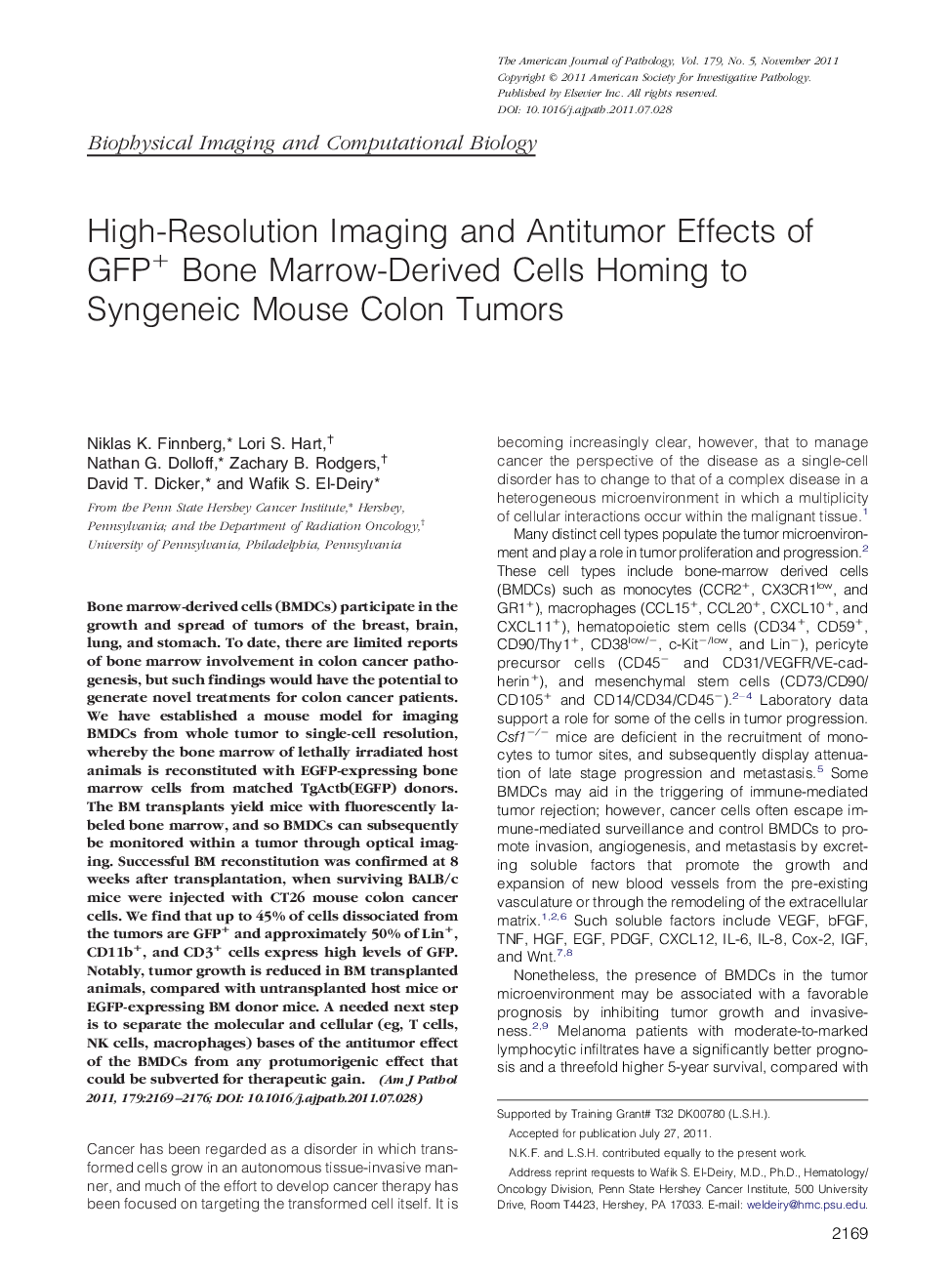| Article ID | Journal | Published Year | Pages | File Type |
|---|---|---|---|---|
| 5938966 | The American Journal of Pathology | 2011 | 8 Pages |
Bone marrow-derived cells (BMDCs) participate in the growth and spread of tumors of the breast, brain, lung, and stomach. To date, there are limited reports of bone marrow involvement in colon cancer pathogenesis, but such findings would have the potential to generate novel treatments for colon cancer patients. We have established a mouse model for imaging BMDCs from whole tumor to single-cell resolution, whereby the bone marrow of lethally irradiated host animals is reconstituted with EGFP-expressing bone marrow cells from matched TgActb(EGFP) donors. The BM transplants yield mice with fluorescently labeled bone marrow, and so BMDCs can subsequently be monitored within a tumor through optical imaging. Successful BM reconstitution was confirmed at 8 weeks after transplantation, when surviving BALB/c mice were injected with CT26 mouse colon cancer cells. We find that up to 45% of cells dissociated from the tumors are GFP+ and approximately 50% of Lin+, CD11b+, and CD3+ cells express high levels of GFP. Notably, tumor growth is reduced in BM transplanted animals, compared with untransplanted host mice or EGFP-expressing BM donor mice. A needed next step is to separate the molecular and cellular (eg, T cells, NK cells, macrophages) bases of the antitumor effect of the BMDCs from any protumorigenic effect that could be subverted for therapeutic gain.
